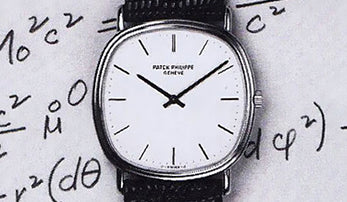Photo Credit: watchonista.com
Even though he returned to Geneva with an order for just 150 timepieces from Tiffany, the company would eventually become Patek Philippe’s largest American customer. Years later, Tiffany appointed Patek Philippe as their principal supplier of pocket watches in March 1876, with the guarantee to look after the Swiss watchmaker’s interests in the United States “as if they were their own”. Their relationship with Tiffany & Co. continues to this day, with Patek Philippe prominently showcased at the company’s Fifth Avenue location.
The Innovation Age
Patek brought back more to Geneva than just a few orders on his trip to America. In a letter to Geneva dated January 1855, Patek noted that the American market wanted watches of quality which could “time the speed of their horses to a quarter of a second”. This inspired Philippe and by 1856, the company introduced their first chronograph, the timing mechanism of which was reset with a key. Five short years later, Jean Adrien Philippe finalized a keyless stem-winding system with the registration of three new patents.
The company’s advancements in timekeeping didn’t stop there. In 1863, Philippe patented the “slipping spring”, and introduced the company’s first tourbillon watches. Unlike conventional watch springs of the day, the “slipping spring” was not fixed to the barrel wall and could move freely – avoiding damage and breakage caused by being too tightly wound, a common problem at the time. The invention by Philippe was instrumental in the development of the self-winding wristwatch mechanisms we still see today.
In 1867, Patek Philippe & Co. was awarded a gold medal at the Paris World’s Fair. The following year, the company created the first Swiss wristwatch as a commissioned piece for Countess Koscowicz of Hungary – a rectangular case fastened to a yellow gold bracelet. The company continued to provide innovative high quality timepieces around the globe, expanding its reach into South America for the first time in 1872.
The New Generation
On March 1st, 1877, Count Antoni Patek (an honor bestowed on him by Pope Pius IX) died at the age of 65 in Geneva. Patek was succeeded in his management role at the company by Joseph Antoine Bénassy-Philippe, son-in-law of Adrien Philippe. Even amongst a major transistion, the company chose to showcase at the Calcutta International Exhibition in 1883. Patek Philippe won another gold medal and caught the eye of many eastern countries. They began producing pieces for clients in Singapore, Vietnam, China, Japan, and Australia, sparking the global expansion of Patek Philippe at the end of the 19th century.
In 1890, Adrien Philippe received the Cross of the Legion of Honor for his services to France. He retired in January 1891, and was replaced by his youngest son Joseph Emile Philippe. Adrien Philippe died on January 5th, 1894 but Patek Philippe was still run as a family company until 1901, when it is transitioned to a stock corporation titled the Ancient Manufacture d’Horlogerie Patek Philippe & Co. S.A.







